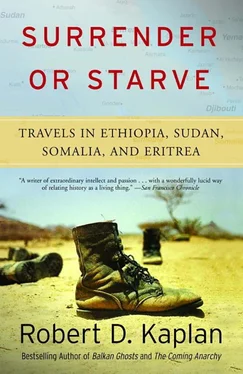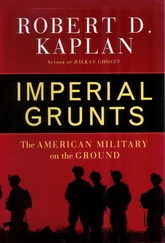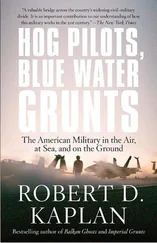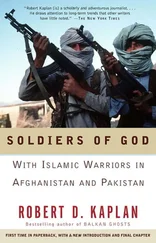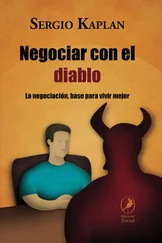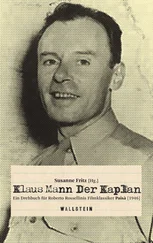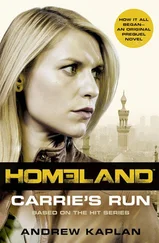Likewise, the emperor’s triumphant return from exile in 1941, which was applauded by the Allies, sparked fear and bitterness in much of his own country. As historian Anthony Mockler related in Haile Selassie’s War: The Italian-Ethiopian Campaign, 1935–1941, the British actually debated whether it was wise to let the emperor return at all. According to Mockler, the Foreign Office in London “always questioned the wisdom of restoring Haile Selassie” to the throne because many in Ethiopia “wished to be free of Amhara rule” and might not rally around the emperor to throw out Mussolini’s forces. Haile Selassie’s eventual role in the liberation was as a figurehead really; British officers planned and led the assault on the Italian army in Ethiopia. In Mockler’s book, there is a photograph of Selassie and Wingate hunched over a map “in a symbolically accurate pose—with Orde Wingate laying down the law… and Haile Selassie looking neat and impressive.”
Once he was back on the throne after the war, the emperor tried moving the clock forward and backward at the same time. The country was opened to foreign investment, and thousands of students were sent abroad for an education. But the style of rule remained anchored in another era. When the students returned, armed with new ideas and insights from their stays in the United States and Europe, they didn’t like what they saw. One of them, Germame Neway, a graduate of Columbia University in New York City, influenced his brother in the imperial bodyguard to attempt a coup on December 14, 1960. The coup failed, but the grumbling, especially among the students, no longer could be suppressed, and a decade of protest set in.
In late 1961, Eritrea rose in revolt. By the time Haile Selassie came to Washington in 1963 to pay his respects to a slain U.S. president, he was a monarch at war, whose power was in steep decline. On the day that President Kennedy was buried, the majestic figure of the marching emperor was more appropriate to the United States than to Ethiopia.
Haile Selassie’s psychological isolation from the forces of upheaval gathering outside the palace was documented by Polish journalist Ryszard Kapuscinski in The Emperor. Critics saw The Emperor, which was first published in 1978 and was loaded with the piercing irony common to the best dissident writing, as an allegory for the situation in Kapuscinski’s native Poland prior to the eruption of the Solidarity trade union movement. An Eastern European writer was at an advantage in Ethiopia during the 1970s: the revolutionary process that toppled and killed Haile Selassie was a story more familiar to a Pole or a Russian than to an African. Kapuscinski was able to paint a portrait of an emperor who was not simply at war with one segment of the population but was a monarch at war with reality.
The Emperor, however, listened to neither the aristocratic grumbling nor the university whispers, believing as he did that all extremes are harmful and unnatural. Demonstrating innate concern and foresight, the Emperor widened the scope of his power and involved himself in new domains, manifesting these new interests by introducing the Hour of Development, the International Hour, and the Army-Police Hour, between four and seven in the afternoon. With the same goals in mind, the Emperor created appropriate ministries and bureaus, branch offices, and commissions, into which he introduced hosts of new people, wellbehaved, loyal, devoted. A new generation filled the Palace, energetically carving out careers.
The story began with the 1973–1974 famine in Tigre and Wollo. Except for its severity—an estimated 200,000 peasants starved to death—there was little that was unusual about this famine. Like the five previous ones that had devastated Ethiopia since Haile Selassie assumed power in 1916, this famine took place in the north; an area that the Amhara emperor had a strategic interest in keeping underdeveloped, on account of Amhara historical conflicts with the Eritreans and Tigreans. A feudal landowning system, an absence of investment, crippling taxation, and drought were the causes of the famine. As far as the palace was concerned, there was nothing to be alarmed about. According to Kapuscinski,
Death from hunger had existed in our Empire for hundreds of years, an everyday natural thing, and it never occurred to anyone to make any noise about it. Drought would come and the earth would dry up, the cattle would drop dead, the peasants would starve. Ordinary, in accordance with the laws of nature and the eternal order of things… none of the dignitaries would dare to bother His Most Exalted Highness with the news that in such and such a province a given person had died of hunger.
In late 1973 there was one difference, however. Between the 1960s famine and the one in the 1970s, television coverage of overseas events finally had come into its own—encouraged no doubt by the intervening Vietnam War. British reporter Jonathan Dimbleby’s film on the famine, The Unknown Famine, of course was not broadcast in Ethiopia, but information about the film filtered back to radicals in Addis Ababa, thereby fostering a strong empathy on their part for the starving peasants up north. A similar bond had eluded Russian revolutionaries until the beginning of this century. In Poland, the convergence of workers and intellectuals into one movement was crucial to Solidarity’s initial success. But in Africa, where radicals tend to come from an urban elite that knows, cares, and thinks little about the countryside and the peasants in it, such a development is unusual.
As news of the famine, conveyed by other journalists who followed Dimbleby’s trail, reached the streets and campus in Addis Ababa, it had the same effect as the 1905 shooting of marching workers in front of the Winter Palace had on Czar Nicholas II—the news broke the emperor’s spell. The edifice of legitimacy, erected by history and tradition, was smashed. What followed was a series of events as drawn out, bloody, and intellectually insane as the Russian and French revolutions, but even more complex. Scholar Bertram D. Wolfe’s depiction of revolutionaries in Russia in Three Who Made a Revolution could easily apply to Ethiopia: “With fiercer passion than ever, they fell to engaging in controversies of a minuteness, stubbornness, sweep, and fury unheard of in all the history of politics.”
The first phase of the uprising in Ethiopia was known as the “creeping coup.” At the beginning of 1974, taxi drivers in Addis Ababa, protesting a rise in gasoline prices, when out on strike. A general strike of all workers followed in March. At the same time, an army mutiny, sparked by a government defeat in Eritrea, was taking place. In Negelle, in the far south of Ethiopia, junior officers arrested their superiors, forcing the generals to eat the same miserable food and dirty water as did the enlisted men. Out of this and other barracks’ rebellions came the Dergue (Amharic for committee), a coordinating body of educated junior officers, with representatives from units throughout the country. The uprising began as a class struggle. But, as pointed out by Marina and David Ottaway in Ethiopia: Empire in Revolution, the ethnic animosities basic to an empire of great diversity quickly became dominant. Almost as soon as it was formed, the Dergue began to fissure along ethnic lines. Because his ancestry was not wholly Amhara, Mengistu’s rise to power was aided by his ability to be seen as a unifying figure.
It was a gradual process. The portrait of one ruler, as so often happens in the Third World, was not abruptly taken down one day from the wall and replaced with that of another. It was as if the picture imperceptibly changed, day by day, a line at a time, during a period of months, until the face of Emperor Haile Selassie was completely wiped out and the face of Mengistu Haile Mariam had emerged from out of the dim background, anonymous and impenetrable; the face of the masses at their most brutal. In the void opened by the absence of democratic institutions and the chaos of revolution, the worst national traits came to the surface.
Читать дальше
